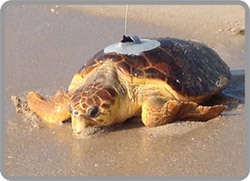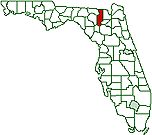Florida Sea Turtles: "Frozen" in Migration Race
Posted July 25, 2014 07:30 am

Ripley Ripley is an adult female loggerhead sea
turtles released with a satellite transmitter on July
28, 2013 from the Archie Carr National Wildlife Refuge,
Florida. She measured 103 cm in curved carapace (shell)
length. Ripley took part in the 2013 Tour de Turtles and
was named by her sponsor, Ripley's Aquariums.
View migration map.
VERO BEACH, FL - "Let them go, let them go!" Insert the melody from the song from Disney's hit movie, "Frozen."
This weekend,
Florida's Sea Turtle Conservancy will do just that,
as it releases two loggerheads - appropriately named
"Anna" and "Elsa" - as part of the group's 2014 "Tour de
Turtles migration marathon" at Disney's Vero Beach
Resort and Melbourne Beach.
David Godfrey, executive director of the Sea Turtle
Conservancy, explained what makes this "marathon" so
unique.
"We want the youth of the state of Florida to learn
about sea turtles," he said, "and using character names
from the most popular animated movie right now is just
ideal for us."
The Conservancy has placed satellite transmitters on
Anna, Elsa and several other turtles to track their
travels along Florida's coast and around the Caribbean.
Anyone can track them online through updated satellite
maps at
tourdeturtles.org. A Saturday event at Disney's Vero
Beach is for guests of the resort, and there's a public
event at Melbourne Beach on Sunday.
Researchers use the migration data to gain a better
understanding of turtle behavior and how the environment
is affecting them, Godfrey said.
"The use of satellite transmitters has opened up a whole
new type of research to learn a lot about the migratory
route that they're taking," he said. "And of course,
that begins to inform you about the kinds of threat that
they may be facing when they're away from the beach."
Scientists estimate only one out of every 1,000 turtle
hatchlings survive to adulthood. They say human
activity, including artificial lighting near beaches,
confuses the hatchlings on land, and trash left on
beaches can contribute to a sea turtle's injury or
death.
Photos/graphics and links added by the Observer
This piece was reprinted by the Columbia County Observer with permission or license. It may not be reproduced in any form without permission or license from the source.
